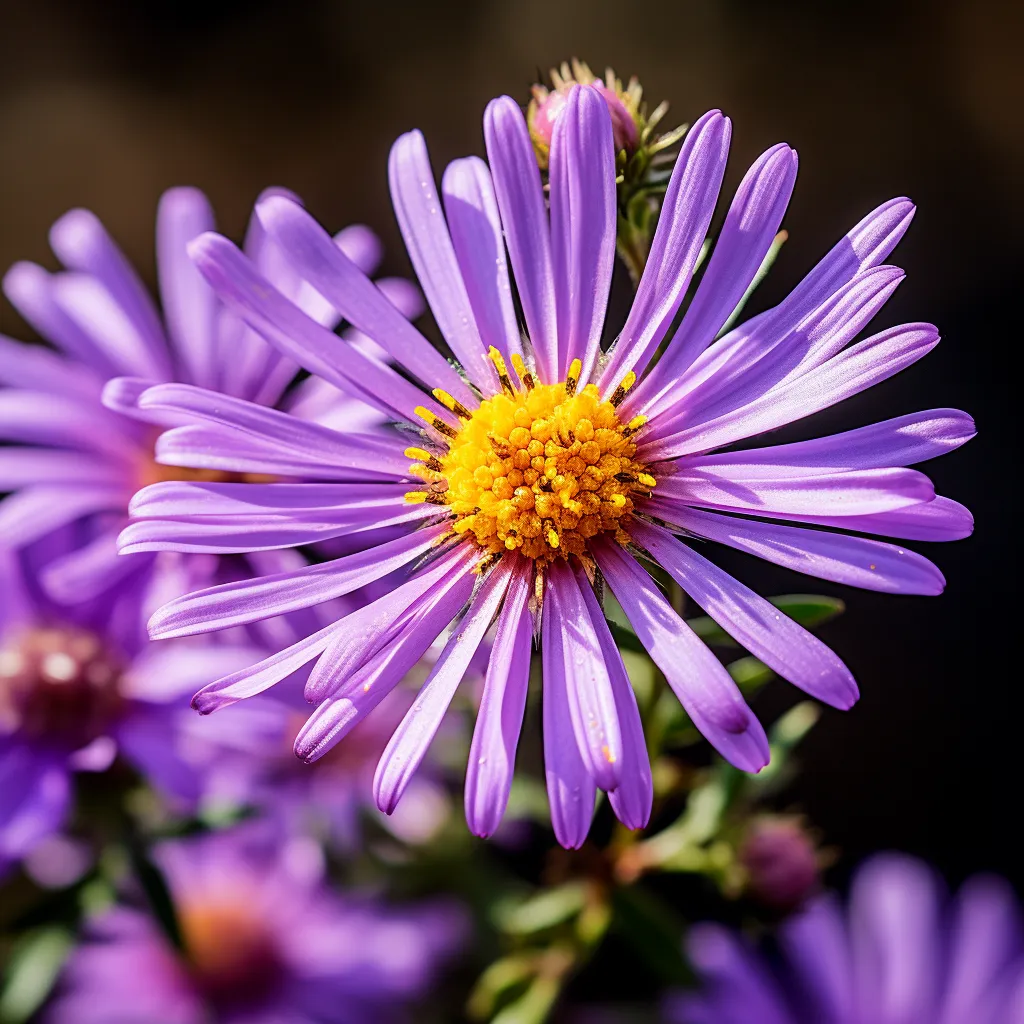Story of Day :
Contents
Symphyotrichum novae-angliae Brunswick (New England aster Brunswick) Plant Care Tips
Gardening enthusiasts are always on the lookout for new and interesting plants to add to their collection.
One such plant that deserves attention is the Symphyotrichum novae-angliae Brunswick, commonly known as New England aster Brunswick.
This beautiful perennial flower is native to North America and can bring a burst of vibrant color to any garden.
In this article, we will explore some valuable care tips for growing and maintaining this stunning plant.
Plant Description
The New England aster Brunswick is a tall, upright plant that can reach heights of up to 3 feet.
It features clusters of daisy-like flowers with vibrant purple or pink petals surrounding a yellow center.
The plant blooms in late summer or early fall, adding a splash of color when most other flowers have faded.
Planting

If you’re considering adding the New England aster Brunswick to your garden, here are some planting tips:
- Choose a location that receives full sun or partial shade.
The plant thrives in well-drained soil but can tolerate different soil types.
- Prepare the soil by removing any weeds and loosening it with a garden fork or tiller.
- Dig a hole slightly larger than the root ball of the plant and place it in the hole at the same depth as it was growing previously.
- Backfill with soil, gently firming it around the roots.
- Water thoroughly after planting to help settle the soil around the roots.
Care Tips
To ensure your New England aster Brunswick thrives and produces abundant blooms, follow these care tips:

- Watering: While the plant is drought-tolerant once established, it still requires regular watering during dry periods.
Water deeply at the base of the plant to promote healthy root growth.
- Fertilization: Apply a balanced fertilizer in early spring to encourage vigorous growth and abundant blooms.
Follow the instructions on the fertilizer packaging for proper application rates.
- Pruning: In late fall or early spring, cut back the stems of your New England aster Brunswick to about 6 inches above ground level.
This will help promote new growth and prevent legginess.
- Deadheading: To prolong blooming and keep your plant looking tidy, remove faded flowers regularly.
This will redirect energy into producing new blooms instead of setting seeds.
- Pest and Disease Control: The New England aster Brunswick is generally resistant to pests and diseases.
However, keeping an eye out for common garden pests like aphids or powdery mildew can help prevent any issues before they become severe.
Benefits of New England Aster Brunswick
The New England aster Brunswick offers more than just its stunning appearance.
Here are some additional benefits this plant provides:
- Pollinator Magnet: The vibrant flowers of this plant attract various pollinators such as bees, butterflies, and hummingbirds.
By adding it to your garden, you are supporting local pollinator populations..

- Naturalizing Effect: Due to its height and ability to spread through underground rhizomes, New England aster Brunswick can create a beautiful naturalized effect in larger gardens or meadows.
. - Fall Interest: With its late-season blooming period, this asters can provide a burst of color when many other plants have finished flowering, adding interest to your garden or landscape.
. - Cut Flower Potential: The New England aster Brunswick makes an excellent cut flower.
Its long stems and vibrant blooms can be used in floral arrangements, bringing a touch of the garden indoors..
Conclusion

The Symphyotrichum novae-angliae Brunswick, or New England aster Brunswick, is a beautiful plant that can add vibrancy and interest to any garden.
By following the planting and care tips provided in this article, you can ensure that your plant thrives and produces an abundance of stunning flowers.
With its pollinator-friendly nature and ability to naturalize large areas, this aster is not only visually appealing but also beneficial to the ecosystem.
Consider adding this versatile perennial to your garden for a splash of color throughout late summer and fall!